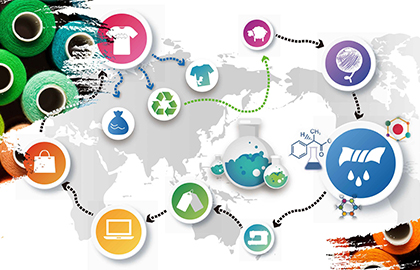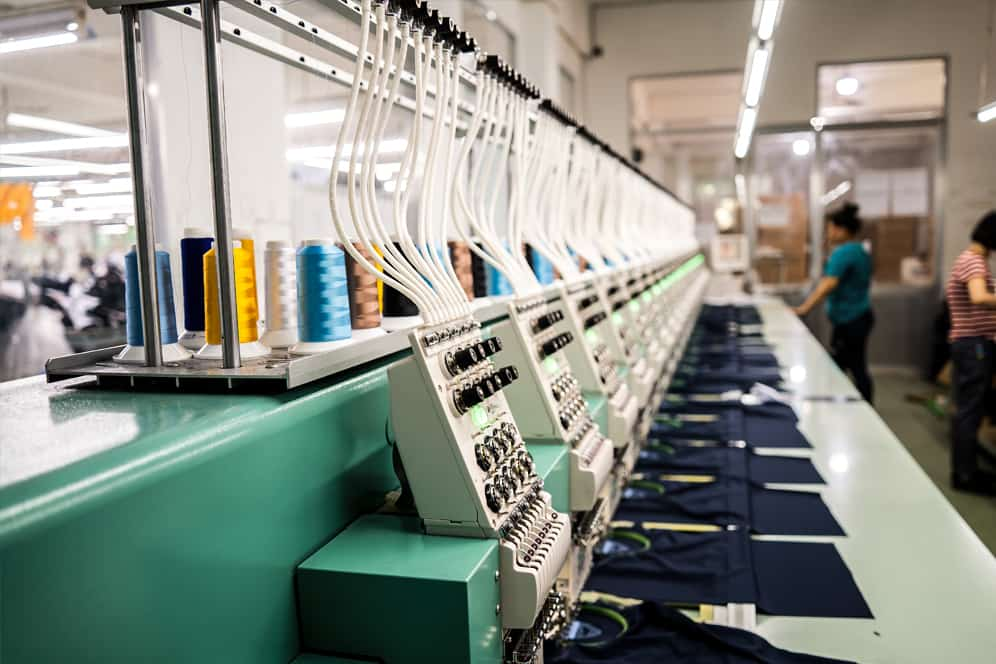Author: Anvesh Kumar

In recent years, there has been a shift to more technologically advanced processes, altering how consumers interact with businesses. businesses are forced to re-evaluate their existing structures. To adapt to the new normal and improve overall performance, Businesses need to digitize.
Digitalization is changing the way businesses operate. Digitization not only helps businesses become more efficient and cost-effective but also enables them to reach new audiences and sell their products faster. According to a report by Market Research Future, the global textile and garment industry market is expected to reach a size of USD 1,207.39 billion by 2023, growing at a CAGR of 7.64% during the forecast period (2018-2023). Increasing demand for textile & apparel
The study found that end-to-end process efficiency was seen as a compelling opportunity by 41% of respondents. Digitization is the first step a business takes to digitally transform its business
Digitization in the textile and apparel industry has a lot of benefits, including streamlining processes, reducing costs, and increasing efficiency.
Streamlining Processes
Digitization in the textile and apparel sector is helping to streamline processes by enabling companies to use only the assets they need when they need them, as well as enabling them to manage demand. These assets can be centralized and managed from a single location, which helps to streamline processes by reducing the need for on-site resources and manual data entry.
Digitization is also helping to streamline processes by reducing the need for manual work, such as measuring and folding fabric, so that employees can focus on more important tasks.
Reduce Costs
One of the key advantages of digitization in the textile and apparel industry is that it helps to reduce costs. This is due to a reduction in the need for on-site resources, a reduction in the number of warehouses needed, and a reduction in the need to print paper-based documents. The reduction in the need for on-site resources means that companies don’t need to employ employees to manage various processes.

Instead, they can use digitization to centralize these processes and manage them remotely, which reduces the need for on-site employees. Digitization is also helping to reduce the number of warehouses needed by enabling companies to forecast demand.
This is because digitization enables them to collect and analyze data in real-time, which allows them to forecast demand and make the necessary adjustments to their inventory.
Sustainability
The global textile industry is one of the most pollutant-releasing industries in the world, with a very high amount of waste and causing 20% of the world’s water pollution. With the help of nanotechnology, factories can make their manufacturing more water-resistant, energy-efficient, and sustainable.
The supply chain and IT operations management became considerably more sustainable once textile plants were digitalized. The garment-making machinery is programmed to create clothing of comparable quality. Using cloud technology frees managers from the effort of manually administering software, allowing them to complete their tasks more quickly and effectively. The textile business is changing to incorporate greener practices, like lowering CO2 emissions, raising energy efficiency, and promoting sensible use. Larger organizations win from these solutions, but smaller, resource-constrained businesses stand to gain more.
Increase Efficiency
Digitization is helping to increase efficiency in the textile and apparel industry by helping to improve the speed and accuracy of data analysis and forecasting. This means that companies can respond more quickly to events and make decisions based on more accurate data, which enables them to make better-informed decisions.
These more efficient data analytics also enable companies to make better forecasts, which helps to increase efficiency by enabling them to make more accurate adjustments to their inventory levels.
Textile and Apparel manufacturers can enhance every step of their production process, from distribution to sales, by utilizing technologies like computer-aided design (CAD) and computer-aided manufacturing (CAM). Additionally, by using AI in manufacturing, companies can anticipate defects and fix them before they become bigger problems.Improved efficiency brought on by digitization will help the textile industry to direct its focus more on generating goods of greater quality and securing the trust of International buyers.
Staying Competitive
Process digitization should be viewed as a tool to help firms become more competitive, not just for technical or commercial divisions. Routine manual tasks can be digitally changed to provide you with an advantage at every level of competition.
For changing company models, employee happiness, customer expectations, and customer behaviors, using digital transformation solutions to improve administrative processes might be advantageous. Administrative digitalization enables businesses to more effectively adjust to the market.
Enhanced Safety
Businesses benefit from greater security than physical documentation thanks to digital transformation solutions (like e-invoices and e-signatures) that are fully legal and compliant with applicable national and international regulations. These solutions also assist businesses in avoiding non-compliance issues in various countries.
Enable Global Reach And Faster Marketing
Digitization is helping to enable global reach and faster marketing in the textile and apparel sector by enabling companies to make their products available to a wider audience.
This is because digitization enables textile companies to make their products available online, helping them reach more customers. Digitization also allows faster marketing, as companies can publish content more quickly and at a lower cost, which helps to promote their products to a wider audience.
Virtual or Augmented Reality (VR)
The apparel industry’s innovation was ushered in by mobile and e-commerce technologies. We may now look forward to the next generation of retail possibilities, especially virtual reality technology. New virtual reality platforms are emerging that are changing the game by integrating the physical and online retail worlds. In the textile industry, for example, try-on avatars are a major hit. Apps like ‘Dressing Room’ leverage augmented reality to let customers try on garments on an avatar that is personalized to their exact measurements before purchasing them.
SAAS – a cloud-based Software-as-a-Service (SaaS) platform, is revolutionizing the fashion industry by offering a comprehensive solution to streamline production processes, achieve sustainability goals, and ensure consistent sizing for clothing brands. With a mission to alleviate the challenges faced by fashion brands in garment design and production, SaaS aims to simplify workflows, reduce working time, and enhance overall efficiency, ultimately minimizing e-commerce returns and landfill waste.
Additional Benefits Of Digitization In The Textile And Apparel Industry
As well as helping to streamline processes, reduce costs and increase efficiency, digitization is also helping to improve the customer experience in the textile and apparel industry by enabling companies to offer 24/7 service. This is because digitization is helping textile companies to make their products available online 24 hours a day, 7 days a week.
This 24/7 availability means that customers can shop for products when it’s most convenient for them. Whether they are looking for a pair of earrings to wear to a party or a new jacket to wear while they are outdoors, they can shop whenever they want.
Limitations Of Digitization In The Textile And Apparel Industry
Although digitization has many advantages, it also has some limitations. One of the key limitations of digitization in the textile and apparel sector is that it can create a false sense of urgency, which could lead to companies rushing their manufacturing processes.
This is because, with digitization, companies can collect data more quickly, analyze it more quickly and take action more quickly, which could lead to them making hasty decisions that they later regret.
Another limitation of digitization in the textile and apparel industry is that companies with limited resources could need help to adapt to the new technology. Companies with limited resources would likely use the old data collection and analysis methods, whereas those with the capital to invest in new technology would benefit the most from digitization.
Customers’ wants and expectations have shifted dramatically in recent years. They prioritize high-quality goods, value-added services, and faster delivery. This has heightened the demand for digital transformation, which includes everything from 3D-printed gowns to smart factories. The process of digital transformation, on the other hand, is not simple. It would need a well-thought-out digitalization plan. Digitization is not just about taking physical paper and converting it into a digital format. It basically means how do we sort not only data but events in an organized industry thereby capturing useful business parameters.



Ankur
Very informative article !!
Kuldeep Parashar
Very informative